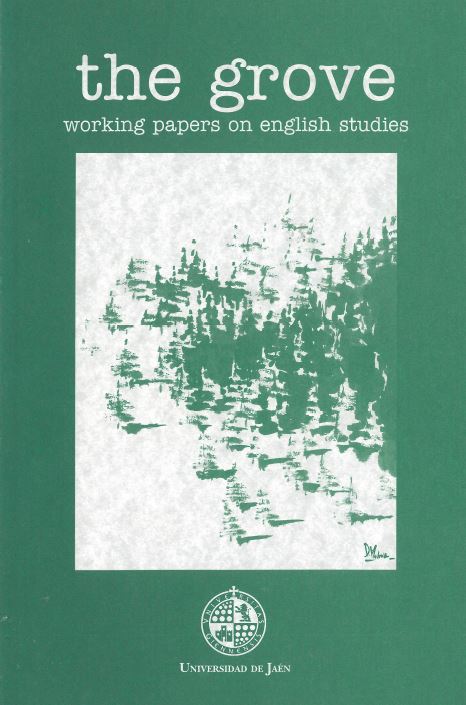Hellenic language and literature in poe’s horror short stories: “siope- a fable” and “the sphinx”
Abstract
Edgar Allan Poe is renowned for his tales of horror and the desolate environments within his works that baffle readers. Several studies in the past have demonstrated his constant attempts to criticize his contemporaries principally due to the immoral path that he believed they were following. In doing so, he envisioned morbid catastrophes that signified his belief that humanity’s absolution would only be ensured through total annihilation and absolute silence. The present study focuses on two of these instances, “Siope- A Fable” and “The Sphinx,” in an effort to demonstrate Hellenic motifs in Poe’s dreary visions that have not been sufficiently discussed by relevant literature.
Downloads
References
Agud, Ana. “Lo absoluto, el sueño, la sílaba ‘om’ y dos poemas crepusculares: una reflexion intercultural.” DIC MIHI, MVSA, VIRVM: Homenaje al profesor Antonio López Eire. Eds. Francisco Cortés Gabaudán and Julián Victor Méndez. Dosuna Salamanca: Ediciones Universidad de Salamanca, 2010.
De Quincey, Thomas. “The Sphinx’s Riddle.” The Works of Thomas De Quincey. Ed. Robert Morrison. 1st ed. Vol. 17. London: Pickering, 2001. 15-16.
Drost, Christian. Illuminating Poe: The Reflection of Edgar Allan Poe’s Pictorialism in the Illustrations for the Tales of the Grotesque and Arabesque. Hamburg: University of Hamburg, 2006.
Gillespie, Gerard. “Prometheus in the Romantic Age.” European Romanticism: Literary Cross-currents, Modes, and Models. Ed. Gerhart Hoffmeister. Detroit: Wayne State UP, 1990. 197.
Huxley, Aldous. Vulgarity in Literature: Digressions from a Theme. London: Chatto and Windus, 1930.
Impelluso, Lucia. Myths: Tales of the Greek and Roman Gods. New York: Abrams, 2008.
Kennedy, J. Gerald, ed. A Historical Guide to Edgar Allan Poe. Oxford: Oxford University Press, 2001.
Mabbott, Thomas Ollive. The Collected Works of Edgar Allan Poe- Vol. II: Tales and Sketches. London and Cambridge: The Belknap Press of Harvard University Press, 1978.
Marks, William S. “The Art of Corrective Vision in Poe’s ‘The Sphinx’.” Pacific Coast Philology 22.1 (1987): 46-51. https://doi.org/10.2307/1316657
May, Charles E. Edgar Allan Poe: A Study of the Short Fiction. Boston: Twayne, 1991.
Morris, Saundra. “The Threshold Poem, Emerson, and ‘The Sphinx’.” American Literature 69.3 (1997): 547-70. https://doi.org/10.2307/2928214
Navarette, Susan. The Shape of Fear. Horror and the Fin De Siècle Culture of Decadence. 1st ed. Lexington: University Press of Kentucky, 2015.
Peeples, Scott. Edgar Allan Poe Revisited. New York: Twayne Publishers, 1998.
Poe, Edgar Allan. “Silence (Siope).” Broadway Journal 2.9 (1845): 135-136. Web. 12 Sep. 2017. <http://www.eapoe.org/works/tales/silncd.htm>.
---. Silence-A Fable. Ed. Henry Curwen. London: Good Readings, 2014.
---. “The Sphinx.” Arthur’s Ladies’ Magazine 5.1 (1846): 15-16.
Pollin, Burton R. “Poe’s ‘Sonnet-To Zante’: Sources and Associations.” Comparative Literature Studies 5.3 (1968): 303-15.
---. “Poe’s Greek: A Short Prolegomenon to a Long Inquiry.” The Edgar Allan Poe Review 2.2 (2001): 71-7.
Servi, Katerina. Elliniki Mythologia [Greek Mythology]. Trans. Katherina Servi. Athens: Ekdotiki Athinon [Athens Publishing], 1997.
Shakespeare, William. Hamlet. New York: Dover Publications, 1992.
Silverman, Kenneth. Edgar A. Poe. A Biography. Mournful and Never- Ending Remembrance. London: Weidenfeld & Nicolson, 1992.
Sophocles. Σοφοκλής. Οἰδίπους τύραννος. Οἰδίπους ἐπί Κολωνῶ. Ἀντιγὀνη [Sophocles. Oedipus Rex. Oedipus at Colonus. Antigone.]. Trans. Stamatis Valsamakis. Athens: Έξαντας [Eksantas], 1961.
Spiridis, Haralabos. ““τι ἐστί ὅ μίαν ἕχον φωνήν τετράπουν και δίπουν και τρίπουν γίνεται” [“Which creature lives on earth and is two-legged, four-legged and three-legged throughout its life?”].” Athens: University of Athens, 2000. Web. 12 Sep. 2017 <http://users.uoa.gr/~hspyridis/ainigmasfigos.pdf>.
Tsokanos, Dimitrios. “Hellenic References in Edgar Allan Poe's Critique on Contemporary Society.” International Journal of English Studies 16.2 (2016): 45-59. https://doi.org/10.6018/ijes/2016/2/235901
Wei-hsin Tien, Morris. “Literature or Psychoanalysis: Poe’s Personality and his Works.” American Studies 10.4 (1990): 1-38.
Wilford, John. “How Epidemics Helped Shape the Modern Metropolis.” The New York Times, 14 Apr. 2008. Web. 18 Mar. 2015. <http://www.nytimes.com/2008/04/15/science/15chol.html?_r=0>.
Downloads
Published
How to Cite
Issue
Section
License
Authors who publish with this journal agree to retain copyright and grant the journal right of first publication with the work simultaneously licensed under a Creative Commons Attribution License that allows others to share the work with an acknowledgement of the work's authorship and initial publication in this journal. Also, authors will retain the rights on their work, even if they will be granting The Grove. Working Papers on English Studies a non-exclusive right of use to reproduce, edit, distribute, publicly communicate and show their work. Therefore, authors are free to engage in additional, independent contracts for non-exclusive distribution of the works published in this journal (such as uploading them to an institutional repository or publishing them in a book), as long as the fact that the manuscripts were first published in this journal is acknowledged.
















